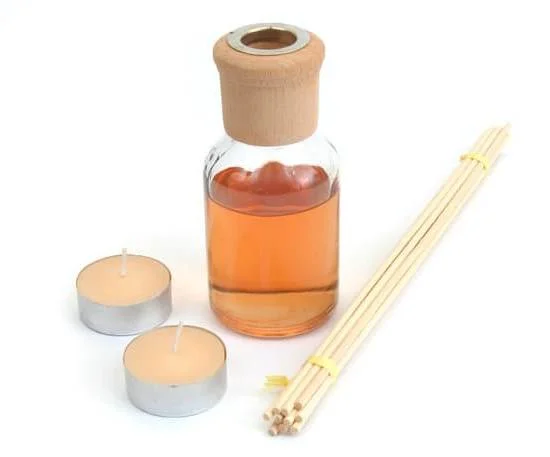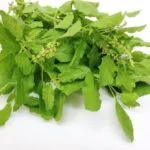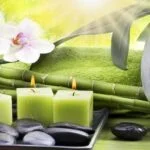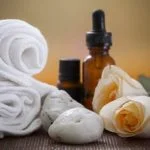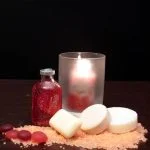Tea tree oil, derived from the leaves of the Melaleuca alternifolia plant, has long been utilized for its medicinal and therapeutic properties. In recent years, it has gained popularity in the practice of aromatherapy for its wide range of benefits. Aromatherapy, an alternative form of holistic healing, utilizes essential oils to promote physical and mental well-being. In this article, we will delve into what tea tree oil is used for in aromatherapy and explore its various applications and advantages.
Tea tree oil has been used by indigenous Australians for centuries due to its powerful antibacterial and antifungal properties. Its distinct scent and versatile uses make it a valuable addition to any aromatherapy collection. Aromatherapy itself offers numerous benefits such as stress relief, improved mood, and relaxation. When combined with tea tree oil, these benefits are further enhanced, making it a popular choice for holistic wellness practices.
Throughout this article, we will delve deeper into the specific benefits of using tea tree oil in aromatherapy and provide detailed instructions on how to incorporate it into your daily routines. Additionally, we will explore popular blends and products that contain tea tree oil as a key ingredient.
Lastly, we will also address safety considerations when using tea tree oil in aromatherapy to ensure a positive and effective experience for all users. Whether you are new to aromatherapy or a seasoned practitioner, understanding the uses and benefits of tea tree oil can greatly enhance your overall well-being.
The Benefits of Tea Tree Oil in Aromatherapy
Tea tree oil, derived from the leaves of the Melaleuca alternifolia plant native to Australia, has been used for centuries for its medicinal and therapeutic properties. When it comes to aromatherapy, tea tree oil offers a wide range of benefits that can enhance both physical and mental well-being.
One of the most prominent benefits of using tea tree oil in aromatherapy is its powerful antibacterial and antifungal properties. This makes it an effective natural remedy for respiratory issues, skin conditions, and even common household cleaning.
In aromatherapy, tea tree oil is commonly used to alleviate symptoms of colds and coughs due to its decongestant properties. By inhaling tea tree oil through steam inhalation or a diffuser, it can help clear airways and ease breathing.
Its anti-inflammatory effects also make tea tree oil a popular choice for soothing minor skin irritations such as insect bites or rashes when applied topically in diluted form. Furthermore, the refreshing scent of tea tree oil can provide mental clarity and promote relaxation during aromatherapy sessions.
Aside from its physical benefits, the use of tea tree oil in aromatherapy is known to have positive effects on mental well-being as well. The aroma of tea tree oil has been reported to reduce stress levels and improve overall mood.
This can be particularly beneficial for individuals dealing with anxiety or fatigue. When using tea tree oil in aromatherapy, it’s important to take note of proper dilution and usage guidelines to ensure safety and maximize its potential benefits without any adverse effects.
| Benefit | Description |
|---|---|
| Antibacterial Properties | Effective natural remedy for respiratory issues, skin conditions, and household cleaning. |
| Mental Well-being | Promotes mental clarity, relaxation, reduces stress levels, and improves mood. |
How to Use Tea Tree Oil in Aromatherapy
Tea tree oil is a versatile essential oil that has been used for centuries due to its powerful antibacterial and antifungal properties. When it comes to aromatherapy, tea tree oil can be a valuable addition to your practice. Here are some detailed instructions on how to effectively use tea tree oil in aromatherapy.
For aromatherapy purposes, tea tree oil can be used in a variety of ways. One common method is through diffusion, where a few drops of tea tree oil are added to a diffuser with water. This allows the oil to be dispersed into the air, creating a therapeutic atmosphere. Alternatively, you can also apply tea tree oil topically when properly diluted with a carrier oil such as coconut or jojoba oil.
When using tea tree oil in aromatherapy, it’s essential to consider safety and proper usage. Tea tree oil is highly concentrated and should always be diluted before applying it to the skin to avoid irritation or allergic reactions. A general rule of thumb is to use no more than 10 drops of tea tree oil for every 1 ounce of carrier oil when applying it topically.
In addition, it’s important to keep in mind that tea tree oil should not be ingested orally as it can be toxic when consumed. Always store tea tree oil out of reach from children and pets, and avoid using it near the eyes or sensitive mucous membranes. With these precautions in mind, incorporating tea tree oil into your aromatherapy routine can offer numerous benefits for both the body and mind.
| Tea Tree Oil Usage | Proper Dilution Ratio |
|---|---|
| Diffusion | A few drops with water in a diffuser |
| Topical Application | No more than 10 drops per 1 ounce of carrier oil |
Tea Tree Oil Aromatherapy Blends
Refreshing All-Purpose Aromatherapy Blend
For a refreshing and versatile aromatherapy blend, consider combining tea tree oil with citrus and mint essential oils. This blend not only gives off a clean and invigorating scent but also offers a variety of benefits such as improving focus, promoting mental clarity, and uplifting the mood.
To create this blend, mix 5 drops of tea tree oil, 3 drops of lemon essential oil, and 2 drops of peppermint essential oil in a diffuser. This combination is perfect for enhancing concentration during work or study sessions.
Soothing Skin Care Blend
Tea tree oil is well-known for its anti-inflammatory and antimicrobial properties, making it an excellent addition to skin care aromatherapy blends. When mixed with lavender and chamomile essential oils, it creates a soothing blend that can be applied topically to alleviate minor skin irritations or as part of a relaxing massage.
To make this blend, dilute 2-3 drops of tea tree oil, 2 drops of lavender essential oil, and 1 drop of chamomile essential oil in a carrier oil like coconut or jojoba oil before applying it to the skin.
Natural Air Purifying Blend
To purify the air in your home while enjoying the benefits of aromatherapy, consider creating a natural air purifying blend using tea tree oil and eucalyptus essential oil. Both oils possess powerful antibacterial and antiviral properties that can help cleanse the air and promote respiratory health.
In a diffuser, combine 4 drops of tea tree oil with 4 drops of eucalyptus essential oil to eliminate odors and airborne bacteria. This blend is particularly beneficial during cold and flu season or when dealing with stuffy indoor environments.
By experimenting with different tea tree oil blends in aromatherapy practices, individuals can customize their experiences based on their specific needs and preferences. The versatility and therapeutic properties of tea tree oil make it an invaluable resource for creating unique aromatherapy blends tailored to various purposes.
Whether used for relaxation, skincare, or household cleaning, incorporating tea tree oil into aromatherapy routines can offer numerous holistic benefits for overall well-being. So feel free to explore different combinations and discover the perfect tea tree oil blend for your own aromatherapy journey.
Aromatherapy Products Containing Tea Tree Oil
When it comes to incorporating tea tree oil into aromatherapy practices, there are several products available that make it easier for individuals to experience the benefits of this essential oil. Here are some popular aromatherapy products that contain tea tree oil:
- Tea Tree Oil Body Wash: Many body washes and shower gels include tea tree oil for its cleansing and refreshing properties. These products can help promote a sense of well-being while also providing antifungal and antibacterial benefits for the skin.
- Tea Tree Oil Shampoo and Conditioner: Hair care products formulated with tea tree oil can help address scalp issues such as dandruff or dryness. The invigorating scent of tea tree oil also adds a refreshing element to your daily hair care routine.
- Tea Tree Oil Soap: Bar soaps infused with tea tree oil are widely available and offer natural cleansing and purifying benefits. These soaps can be used for both handwashing and full body cleansing, providing a soothing aromatherapy experience.
- Tea Tree Oil Lotion or Cream: For topical application during aromatherapy sessions, lotions or creams containing tea tree oil can be massaged onto the skin for a moisturizing and therapeutic effect. Look for products specifically designed for aromatherapy use with added essential oils for enhanced relaxation.
- Tea Tree Oil Candles or Room Sprays: To create a calming atmosphere in your living space, consider using candles or room sprays infused with tea tree oil. These products can help purify the air while also contributing to an overall sense of tranquility during aromatherapy sessions.
By utilizing these various aromatherapy products containing tea tree oil, individuals can reap the benefits of this versatile essential oil in different aspects of their daily self-care routines. Whether it’s through personal hygiene, skincare, or creating an ambient environment, the inclusion of tea tree oil enhances the overall experience of aromatherapy.
Safety Considerations When Using Tea Tree Oil in Aromatherapy
Tea tree oil is a popular essential oil that has been used for its medicinal properties for centuries. When used in aromatherapy, it can provide a range of benefits, from promoting relaxation to supporting respiratory health. However, it’s important to note that tea tree oil is potent and should be used with caution. Here are some safety considerations to keep in mind when using tea tree oil in aromatherapy:
1. Proper Dilution: Tea tree oil is highly concentrated and can cause skin irritation if applied directly. It’s crucial to dilute it with a carrier oil, such as coconut or almond oil, before applying it to the skin. A general rule of thumb is to use 1-2 drops of tea tree oil per teaspoon of carrier oil.
2. Skin Patch Test: Before using tea tree oil topically, it’s essential to perform a patch test to check for any adverse reactions. Apply a small amount of diluted tea tree oil to a discreet area of the skin and wait 24 hours to see if any redness, itching, or irritation occurs.
3. Inhalation Safety: When using tea tree oil in a diffuser for aromatherapy purposes, make sure the room is well-ventilated. Prolonged inhalation of concentrated essential oils can cause dizziness or headaches in some individuals.
4. Keep Away from Pets and Children: Tea tree oil can be toxic if ingested by pets or young children. Always store it in a safe place out of reach and be cautious when using it around animals.
5. Consult with a Professional: If you have any underlying health conditions or are pregnant or nursing, it’s best to consult with a certified aromatherapist or healthcare professional before using tea tree oil in aromatherapy.
By following these safety considerations and guidelines, individuals can enjoy the benefits of tea tree oil in their aromatherapy practices while minimizing any potential risks associated with its use. Always remember that less is more when it comes to essential oils, and proper precautions should be taken to ensure a safe and enjoyable experience with tea tree oil in aromatherapy.
Personal Experiences With Tea Tree Oil in Aromatherapy
Tea tree oil, also known as melaleuca oil, has been widely used in aromatherapy for its numerous benefits. Many individuals have reported positive experiences and outcomes from incorporating tea tree oil into their aromatherapy practices. From alleviating respiratory issues to improving skin conditions, the personal experiences with tea tree oil in aromatherapy are diverse and impactful.
Respiratory Relief
One of the most commonly reported experiences with tea tree oil in aromatherapy is its ability to provide relief from respiratory issues. When used in a diffuser or steam inhalation, the antibacterial and anti-inflammatory properties of tea tree oil can help clear congestion and ease symptoms of colds or sinus infections. Individuals often report feeling a sense of clarity and improved breathing after using tea tree oil for respiratory support.
Skincare Solutions
Many people have also shared their success stories with using tea tree oil in aromatherapy for skincare purposes. Its antifungal and antibacterial properties make it an effective natural remedy for acne, fungal infections, and other skin concerns. Diluted tea tree oil can be applied topically as part of a skincare routine, leading to clearer and healthier-looking skin for some individuals.
Mood Enhancement
In addition to physical benefits, personal experiences with tea tree oil in aromatherapy often include improvements in mood and mental well-being. The refreshing and uplifting scent of tea tree oil is believed to have mood-boosting effects, promoting feelings of relaxation and mental clarity. Many individuals use it in diffuser blends or as an ingredient in homemade room sprays to create a calming atmosphere at home or work.
These personal experiences demonstrate the versatility and effectiveness of tea tree oil in aromatherapy, encouraging others to explore its potential benefits for themselves. Whether seeking respiratory relief, skincare solutions, or mood enhancement, many people have found value in incorporating tea tree oil into their holistic wellness routines.
Conclusion
In conclusion, the use of tea tree oil in aromatherapy offers a wide range of benefits and therapeutic properties. From its antibacterial and antifungal qualities to its ability to promote relaxation and alleviate stress, tea tree oil has become a staple in many aromatherapy practices. Its versatility allows for various methods of application, including diffusing, topical use, and blending with other essential oils.
For those looking to explore the world of aromatherapy, incorporating tea tree oil into their routine can bring about positive results. Whether it is used on its own or in combination with other essential oils, the potential for creating personalized blends and experiencing its healing effects is endless. Additionally, the availability of aromatherapy products containing tea tree oil provides convenience for those seeking to harness the power of this natural remedy.
As with any essential oil, it is important to exercise caution and adhere to safety guidelines when using tea tree oil in aromatherapy. Proper dilution and usage recommendations should be followed to avoid any potential risks associated with its concentrated form. By understanding how to safely incorporate tea tree oil into aromatherapy practices, individuals can fully enjoy its therapeutic benefits while minimizing any adverse effects.
Ultimately, the use of tea tree oil in aromatherapy opens up a world of holistic healing and well-being for those who seek natural remedies. So consider giving it a try in your own practice and experience firsthand the power of this versatile essential oil.
Frequently Asked Questions
Can You Put Tea Tree Oil in an Essential Oil Diffuser?
Yes, you can put tea tree oil in an essential oil diffuser. However, it’s important to dilute the tea tree oil with water or a carrier oil before adding it to the diffuser. This will help ensure that the scent of the tea tree oil is not too overpowering when diffused into the air.
How Do You Use Tea Tree Oil for Fragrance?
Tea tree oil can be used for fragrance by adding a few drops to a spray bottle filled with water and misting it around your home or on linens. Alternatively, you can add a few drops of tea tree oil to unscented lotions, shampoos, or body washes to enjoy its fragrance throughout the day.
When Should You Not Use Tea Tree Oil?
Tea tree oil should not be used on pets, as it can be toxic to them if ingested or absorbed through their skin. Additionally, pregnant or breastfeeding women should consult with a healthcare professional before using tea tree oil, as its safety during these periods is not well-documented.
People with sensitive skin may also want to perform a patch test before using tea tree oil topically, as it can sometimes cause irritation or allergic reactions.

Are you looking for a natural way to improve your health and wellbeing?
If so, aromatherapy may be the answer for you.

